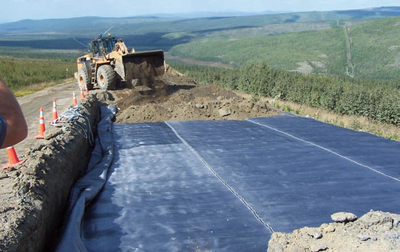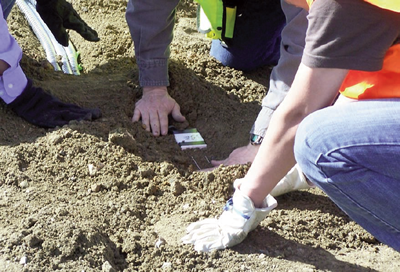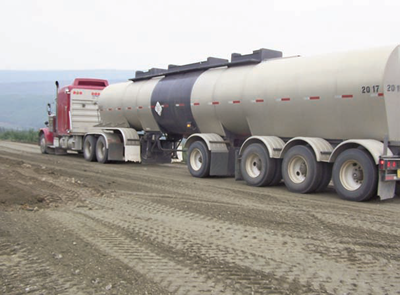
How to mitigate frost heave and road degradation in cold climates? Tencate Geosynthetics writes on the beneficial impact of installing a woven reinforcing geosynthetic material–Mirafi® H2Ri–along an important stretch of road utilized by oil and resource extraction industries.
**
The Dalton Highway is one of the most isolated roads in the United States. However, it serves a large amount of truck traffic because it is the only route for ground transportation between the oil fields at Prudhoe Bay and the city of Fairbanks. The extreme northern environment causes degradation of this 500 mile highway due to frost heave. One problem section, at mile 110, known as Beaver Slide experiences severe deterioration during the spring thaw due to shallow groundwater that runs downslope on an 11% grade under the highway. The water pools up in the road embankments and causes frost boils that lead to road damage.

THE DESIGN
Beaver Slide was chosen by the Alaska Department of Transportation as a good location to challenge Mirafi® H2Ri* geosynthetic due to the deterioration issues that it experienced in the past. The University of Alaska Fairbanks was researching the validity of Mirafi® H2Ri to help build better roads in these northern climates where frost heaving is an issue. The last step to prove the effectiveness of Mirafi® H2Ri was to test it in a known problem area for the DOT. Along with Mirafi® H2Ri, 22 sensors were placed in a grid like pattern to measure moisture levels and temperature changes throughout the roadway cross section.
THE CONSTRUCTION
Excavation of the existing road confirmed that an organic tundra layer was approximately 4-5 feet below the road surface. Frozen soil was also encountered along with water from the high ground water table.

After excavation, two layers of Mirafi® H2Ri were installed 18 in. apart with the first layer installed directly on the subgrade. Sensors were placed below and above the first layer of Mirafi® H2Ri and finally sensors were placed above the second layer. The sensor leads were all bundled together and buried in a trench that led to a data collection unit on the side of the road.
THE PERFORMANCE
The site was monitored for a year by the researchers at the University of Alaska Fairbanks and employees of the Alaska Department of Transportation. The sensors showed that Mirafi® H2Ri is transporting water across the road section without allowing the water to boil through the roadway and cause soft spots. In fact, it was observed that the section where Mirafi® H2Ri was installed was in very good shape, while the areas where Mirafi® H2Ri was not installed were at times nearly impassable. The unique strength characteristics combined with the hydrophilic and hygroscopic wicking fiber in Mirafi® H2Ri proved to be an ideal solution to provide stability at the Beaver Slide area on the Dalton Highway.
For more information on TenCate’s geosynthetic materials and project expertise, visit www.tencate.com.
*US Patent #7,874,767











